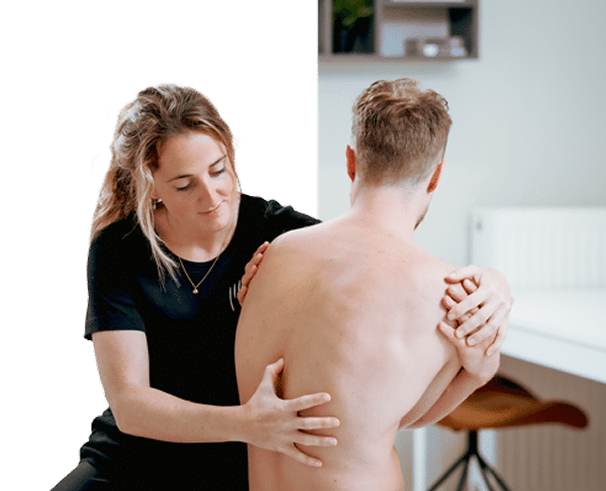Causes of elbow pain
Pain in the elbow can have several causes. Sometimes it is an injury from sports or work, sometimes inflammation or wear and tear. Prolonged repetitive motions, such as typing, lifting or playing sports, can also cause irritation. The pain can be on the inside, outside or back of the elbow, and sometimes radiate to forearm or hand.
Common causes of elbow pain are:
- Overuse due to repetitive motion.
- Tennis elbow (inflammation on the outside of the elbow).
- Golfer’s elbow (inflammation on the inside of the elbow).
- Bursitis in the elbow.
- Stiffness after injury or surgery.
- Nerve entrapment or entrapment in the arm.
- Wear and tear or osteoarthritis in the elbow joint.
Common injuries and conditions in the elbow
Tennis elbow (lateral epicondylitis)
Tennis elbow often results from overuse of the extensor muscles of the wrist and forearm. This causes pain on the outside of the elbow, especially when lifting, pinching or twisting.
Golfer’s elbow (medial epicondylitis)
With golfer’s elbow, the pain is just on the inside of the elbow. Often due to repeated bending movements of the wrist or forearm, such as during sports or work.
Bursitis elbow
Bursitis in the elbow causes swelling, warmth and pain at the back of the joint. Often caused by pressure, impact or infection.
Nerve entrapment (cubital tunnel syndrome)
A pinched nerve in the elbow can cause tingling, pain or loss of strength in the forearm and hand. This is also known as cubital tunnel syndrome.
Osteoarthritis in the elbow
Wear of the cartilage in the elbow can cause pain, stiffness and decreased mobility. Often noticeable when turning or stretching the arm.
Recognizable symptoms in elbow problems
Do you recognize one or more of these signs? If so, it is wise to have yourself examined by a physical therapist:
- Pain when bending or stretching the elbow.
- Pressure pain on the inside or outside of the elbow.
- Stiffness or restriction of movement.
- Swelling or warmth around the joint.
- Tingling in forearm, wrist or fingers.
- Loss of strength in the hand or forearm.
- Pain when pinching, lifting or twisting the wrist.
The earlier you take action, the faster you recover and prevent symptoms from getting worse.
When does physical therapy help with elbow pain?
Physical therapy helps with both acute and long-term elbow pain. We focus on pain reduction, restoring load capacity and improving muscle and joint function. At The Physio Man, you will receive customized exercises, advice and treatment to permanently reduce symptoms.
Physical therapy can also accelerate recovery and prevent recurrence after surgery, injury or recurrent overuse.
This is how The Physio Man helps you recover
We look at the whole picture: not just the elbow itself, but posture, movement patterns and muscle balance.
Mobilize, empower and guide
Depending on your symptoms, we focus on:
- Mobilizations to increase elbow mobility.
- Exercises for strength and stability of forearm, wrist and shoulder.
- Massage or trigger point treatment for tense muscles.
- Advice on work posture, sports technique and load.
- Taping or braces to support during recovery.
Long-term recovery
We build up the load step by step and work on prevention so that symptoms do not return. So you can move again without limitations.
This is how we approach it at The Physio Man
1. Intake and examination
We start with a comprehensive intake and physical examination to determine the cause of your elbow pain.
2. Customized treatment
You will receive a personalized plan with exercises and treatment methods that fit your goals and daily activities.
3. Working together
With personal guidance, we work step by step toward a pain-free and strong elbow.
Share this article:


